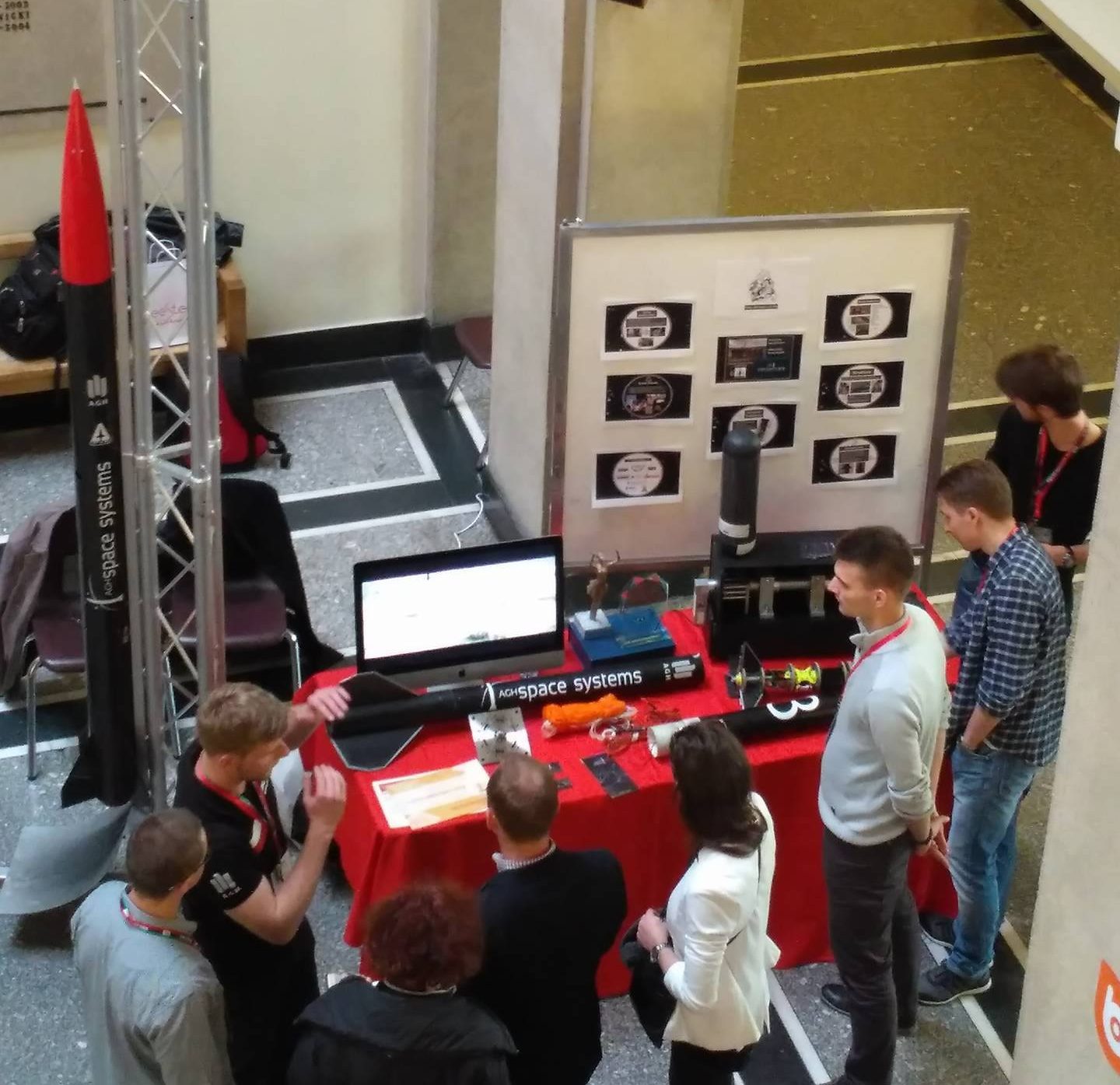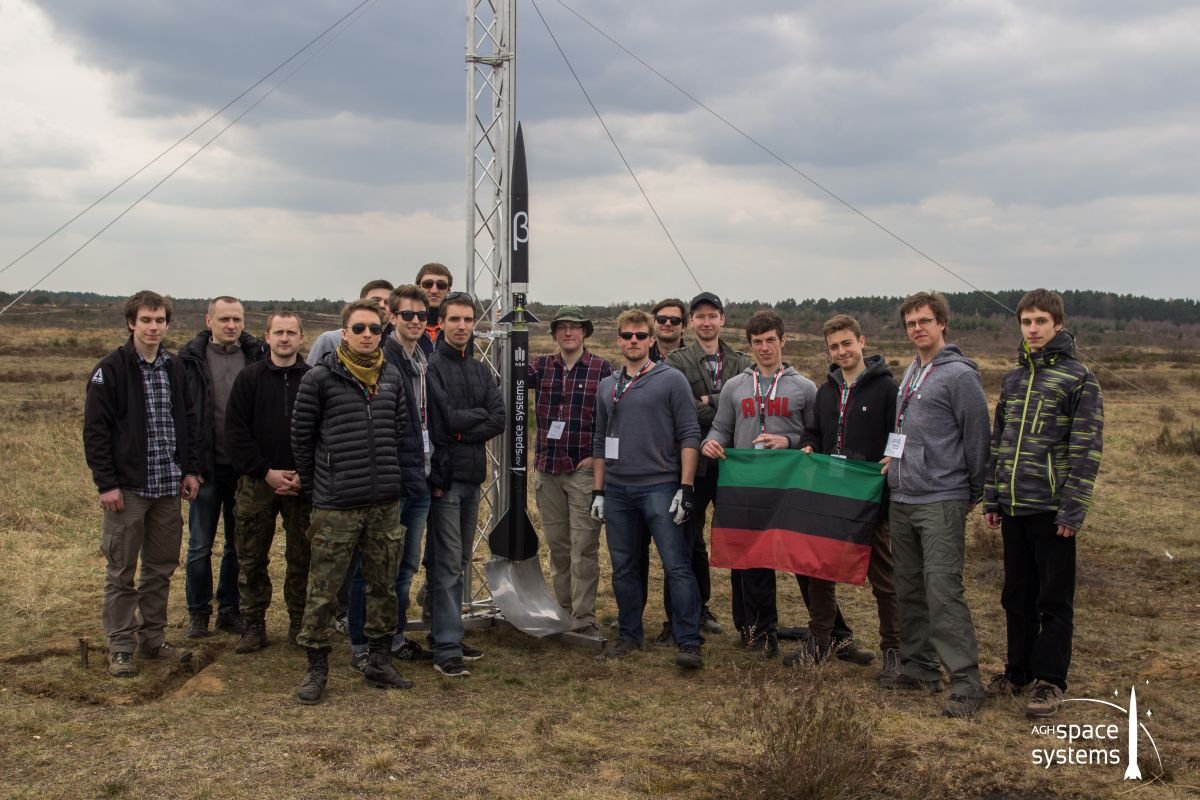


Beta, affectionately called Beatka by us, is the first rocket built by the members of AGH Space Systems. The goal of the project was to introduce the newly formed team to the world of rockets, aerodynamics, hybrid engines, and advanced composites.
The main goal of constructing the Beta rocket was to create and test a complete system consisting of a propulsion subsystem based on the available engine from the Carbonara rocket, an electronics subsystem controlling the rocket’s flight, a proprietary recovery subsystem, as well as a ground station and communication subsystem.
Rocket length 2.5 m
Rocket launch mass 5 kg
Propulsion type hybrid
Fuel polypropylene
Oxidizer nitrous oxide
Maximum altitude 1.2 km
The structure of the rocket was made of fiberglass laminate and epoxy resin with a core layer to reduce the rocket’s mass while maintaining structural strength. Additionally, several elements were 3D printed, such as the camera mount, electronics, antenna, and the nozzle cover, which after a failed launch was replaced with a metal frame. The recovery process of Beta relied on the use of two parachutes – a pilot and a main parachute, which were deployed using compressed CO2. For this purpose, a mechanical system with a CO2 cartridge piercing mechanism was created.
The onboard electronics used a board from the first probe prepared for the CanSat Competition. Its task was to communicate with the rocket and record flight parameters during the mission.
The rocket was powered by a hybrid B2 engine from the Carbonara rocket, which was modified by replacing the burnable membrane with a servo valve placed between the injector and the oxidizer tank. The main fuel used was tested polypropylene, but during the flight, experimental mixtures were also tested, such as fabric soaked in epoxy resin with the addition of paraffin, metals, and catalysts.
Beta’s flights took place twice at the military polygon in Drawsko Pomorskie during the Experimental Rocket Flights event organized by the Polish Rocket Society in April 2016. The rocket also launched three times at the Błędowska Desert.
Despite parachute and engine failure during the mentioned flights, the rocket remained functional and ready for further missions. In the academic year 2016/2017, Beta was rebuilt and in April 2019, it participated again in the Experimental Rocket Flights event at the Drawsko Pomorskie military polygon. It also competed in the Apogeum contest organized by the Polish Rocket Society, where it took third place. The design used the B3 engine, previously used in the Panda3 rocket, allowing it to reach a height of 1444 m.
This project provided valuable knowledge that has contributed to subsequent rocket endeavors, which have been rapidly evolving year after year. During the Beta engine tests, a test stand was created, which, thanks to numerous improvements and modifications, is still used for research on new generations of hybrid engines we produce. The project also used an aluminum launch pad with a truss structure, which was also used by the Carbonara and Panda3 rockets.
Leader: Bartosz Postulka
Hybrid propulsion section: Tomasz Palacz, Aleksander Guzik, Dawid Gacek, Bartosz Moczała, Jakub Kosidło, Przemysław Drożdż
Mechanics and recovery system section: Tomasz Fuchs, Jakub Rachucki, Bartosz Moczała, Artur Biernat
Electronics section: Bartosz Moczała, Filip Stachowicz, Przemysław Drożdż
Ground station section: Adam Kurzak, Jacek Garbuliński
Logistics and marketing section: Bartosz Postulka, Marek Bocian, Karol Horosin, Justyna Bzdoń
